Bidriware
Have you ever wondered how Bidriware is made or where you can find authentic Bidriware in today’s market? This blog explores its history, craftsmanship, and how artisans are adapting traditional techniques to modern trends.
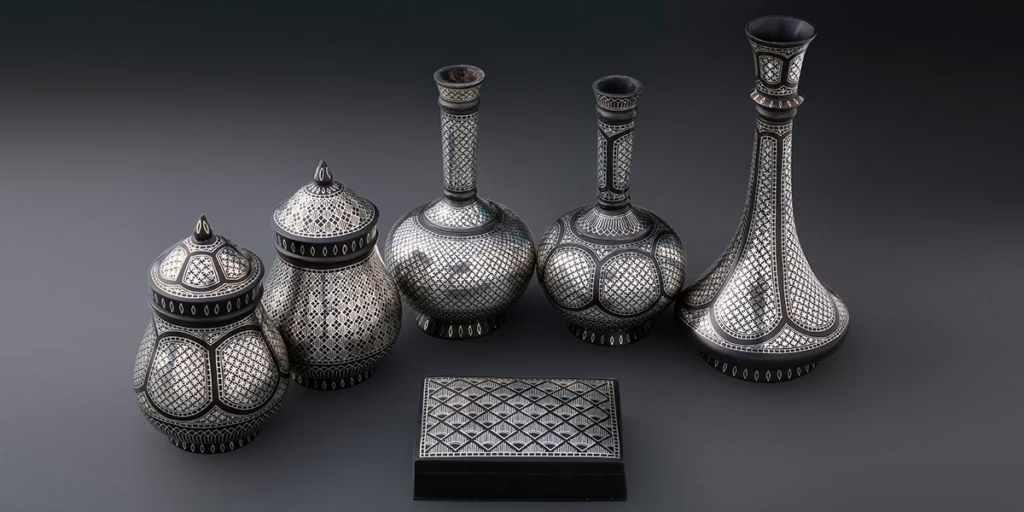
Bidar, a historic town in Karnataka, holds a legacy shaped by centuries of artistry and culture. Among its many treasures, one craft stands out for its immense beauty and timeless appeal, Bidriware. This art form, characterized by its striking silver inlay work on a black metal base, is not just a testament to the artisans’ skill but also a reflection of the cultural amalgamation that defines India’s history.
Origins of Bidriware: A Confluence of Cultures
The story of Bidriware dates back to the 14th century during the reign of the Bahmani Sultans. It is believed that the art form was introduced to India by the renowned Sufi saint Khwaja Moinuddin Hasan Chisti in the form of utensils. The Bahmani Sultan Ahmed Shah invited Abdullah bin Kaiser, a craftsman from Iran, to work on decorating the royal palaces and courts. This collaboration between Persian artisans and local craftsmen led to the birth of Bidriware, blending Turkish, Persian, and Arabic influences with indigenous styles to create a unique art form.
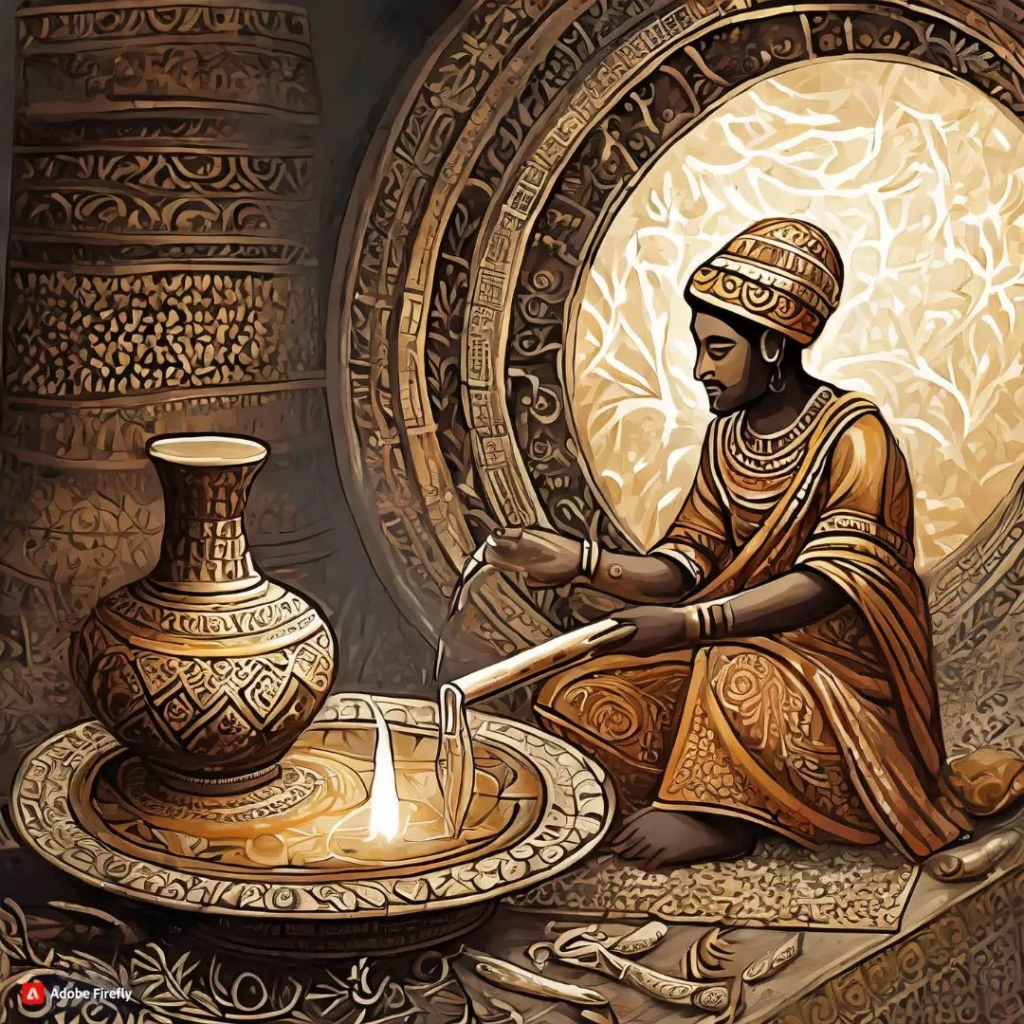
How is Bidriware Made? A Step-by-Step Look at the Process
Creating a piece of Bidriware is a labor-intensive process that involves multiple stages, each requiring precision and dedication. The journey from a simple alloy to a masterpiece can be broken down into the following steps:
1. Casting the Alloy
The foundation of Bidriware is an alloy composed predominantly of zinc and copper, typically in a ratio of 16:1. This specific composition gives the metal its characteristic black color. The process begins by creating a mold from malleable soil mixed with castor oil and resin. Molten metal is then poured into this mold to form the desired shape.
2. Filing and Smoothing
Once the metal has cooled and solidified, the roughcast piece undergoes filing to smooth its surface. This step ensures that the piece is free from imperfections and ready for design work.
3. Designing and Engraving
Artisans then sketch elaborate designs onto the surface using a metal stylus. These designs often draw inspiration from Persian roses, geometric patterns, and stylized poppy plants. Once the design is outlined, craftsmen use small chisels and hammers to engrave the patterns into the metal.
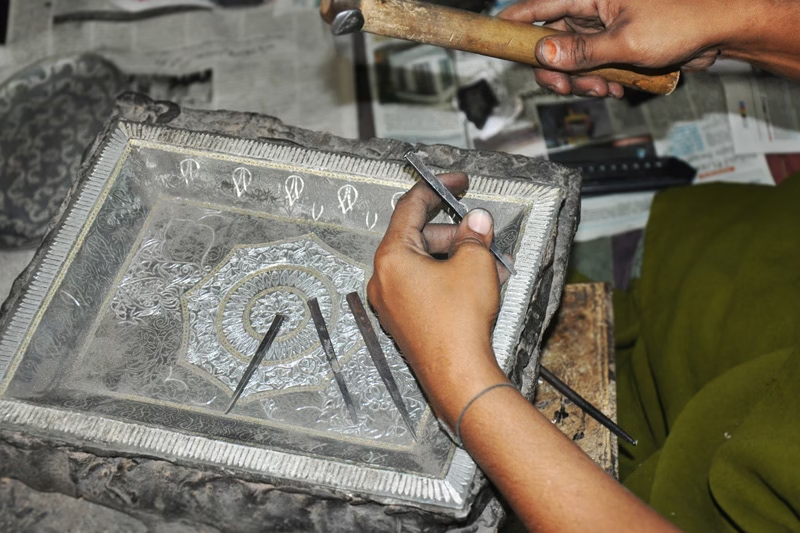
4. Inlaying Silver
The engraved grooves are precisely filled with fine silver wires or flattened strips. This inlay work is done with great care to ensure that the silver fits perfectly into the patterns, highlighting the contrast between the black metal and the shiny silver.
5. Smoothing and Polishing
After the inlay work is completed, the piece is filed and polished again to remove any excess silver and to smooth the surface. This step ensures that the silver inlay is flush with the metal surface, giving it a seamless appearance.
6. Blackening
The distinctive black color of Bidriware is achieved through a unique process involving a special variety of soil found only in the unlit parts of the Bidar fort. This soil is mixed with ammonium chloride and water to create a paste, which is then rubbed onto the heated metal surface. The paste selectively darkens the body while leaving the silver inlay unaffected, resulting in a striking contrast.
7. Final Polishing
The final step involves washing the piece to remove the paste and then applying oil to deepen the matte coating. This enhances the blackness of the metal, making the silver inlay stand out even more.
Designs and Patterns: A Reflection of Cultural Synthesis
Bidriware designs are a testament to the rich cultural heritage of India, reflecting a blend of various artistic traditions. The patterns can be broadly categorized into the following themes:
1. Floral and Faunal Designs
One of the most common designs in Bidriware is the depiction of various flowers and leaves, known locally as ‘asharfi-ki-booti’ and ‘vine creepers.’ These designs showcase the artisans’ deep appreciation for nature and their ability to translate its beauty into metalwork.
2. Geometric Patterns
Geometric patterns are another staple in Bidriware designs. These patterns often consist of elaborate interlocking shapes and lines, creating mesmerizing visuals that reflect the craftsmen’s mathematical precision and artistic flair.
3. Calligraphic Inscriptions
In some Bidriware pieces, especially those influenced by Islamic art, calligraphic inscriptions featuring verses from the Quran are artfully inlaid. These pieces not only serve as decorative items but also hold religious significance.
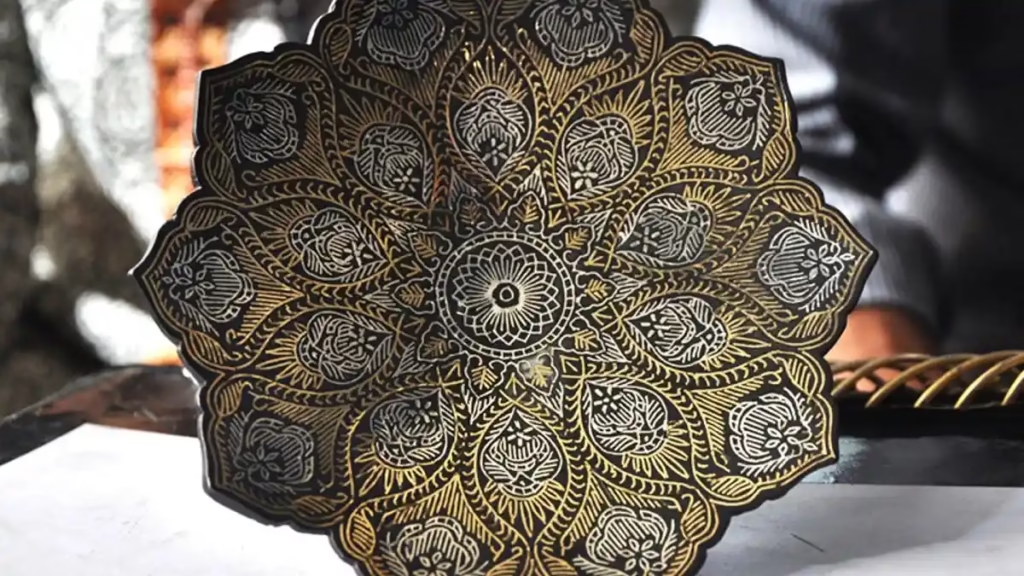
4. Human Figures and Scenes
Though less common, some Bidriware items depict human figures and scenes, showcasing the artisans’ storytelling abilities and their skill in capturing human expressions and activities in metal.
The Cultural Significance of Bidriware
Bidriware is more than just an art form; it is a symbol of India’s rich cultural heritage and the synthesis of various artistic traditions. Its significance can be understood through the following aspects:
1. Symbol of Royalty and Prestige
Historically, Bidriware items were considered symbols of wealth and status. They were often used in royal courts and gifted among the nobility. The beautiful designs and the labor-intensive process made these items highly valuable.
2. Economic Importance
Bidriware has been an important export handicraft of India, contributing to the economy and providing livelihoods to many artisans in the Bidar region. The craft has also played a role in promoting India’s cultural heritage on the global stage.
3. Preservation of Traditional Craftsmanship
The continued practice of Bidriware craft helps preserve traditional techniques and skills that have been passed down through generations. It serves as a living link to the past, maintaining the cultural identity of the region.
Stories of Artisans: Guardians of a Timeless Tradition
The survival and evolution of Bidriware are owed to the dedicated artisans who have devoted their lives to this craft. Their stories are intertwined with the history of Bidriware, reflecting resilience, innovation, and a deep-seated passion for their art.
Syed Tassaduq Hussain
According to the census of India in 1961, Syed Tassaduq Hussain was a prominent figure in the Bidriware community, serving as the head of the Gulistan Cooperative Society in Bidar. His leadership and dedication played a crucial role in organizing artisans and promoting the craft on national and international platforms.
Shah Rasheed Ahmed Quadri
Shah Rasheed Ahmed Quadri is a recipient of several awards, including a National Award in 1988, the Karnataka State Award in 1984, the Rajyotsava Award in 2006, and the Great Indian Achievement Award in 2004. In 2015, the Government of India honored him with the prestigious Shilp Guru Award. His contributions have been instrumental in preserving traditional designs while also encouraging innovation within the craft.
Rehaman Patel
Gulbarga-based artist and researcher Rehaman Patel has conducted extensive research on Bidri art, collecting evidence of its historical background, methods of making Bidri, critical reviews of Bidri collections in Indian and international museums, and introductions to Bidri artisans. His work has been pivotal in documenting and promoting the craft, ensuring that the stories of the artisans and their creations are preserved for future generations.
Story of MA RAUF – THE NURTURING GUARDIAN OF BIDRIWARE
In the quiet lanes of Bidar, where the rhythmic tapping of chisels once echoed through generations, Abdul Rauf sits in his dimly lit workshop, his fingers tracing the delicate silver inlays of a nearly finished Bidriware masterpiece. His family has carried this craft in their blood for over 400 years, yet today, he watches his son hesitate at the threshold, torn between tradition and the promise of a better-paying, modern career.
“Our ancestors lived with dignity through this craft,” Rauf sighs, “but now, artisans struggle to even afford a decent life.” The process that once symbolized royal grandeur now barely fetches a living wage, overshadowed by mass production and fading appreciation. Many young artisans, unwilling to endure the long hours, dwindling demand, and poor financial returns, are walking away, leaving behind a legacy that risks fading into history.
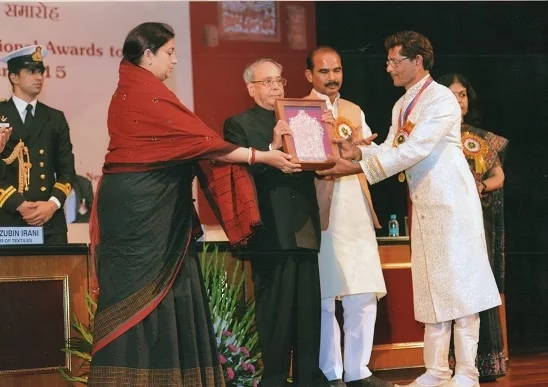
Yet, Rauf refuses to surrender. He has adapted, crafting contemporary Bidri jewelry, home décor, and fusion designs to attract modern buyers. Online platforms and government recognition have provided a glimmer of hope, but he knows it’s not enough. “If people don’t buy authentic Bidriware, if they don’t see the value in our art, it will die with us,” he says, his voice heavy with emotion. His story echoes across countless artisan families, custodians of India’s fading crafts, standing at a crossroads between preserving heritage and embracing survival. The future of Bidriware depends on whether the world still finds beauty in its timeless silver patterns or allows them to vanish, lost to the past.
Traditional vs. Modern Bidriware: How the Art Has Changed Over Time
While this art is deeply rooted in tradition, it has also evolved to meet contemporary tastes and demands. Innovations in design and product range have played a significant role in keeping the art relevant in modern times. Artisans are now creating Bidriware jewelry, such as earrings, pendants, and cufflinks, which appeal to younger generations and international buyers. Home decor items like vases, lampstands, and even furniture pieces featuring Bidri inlays are gaining popularity, allowing the art to find a place in contemporary interiors.
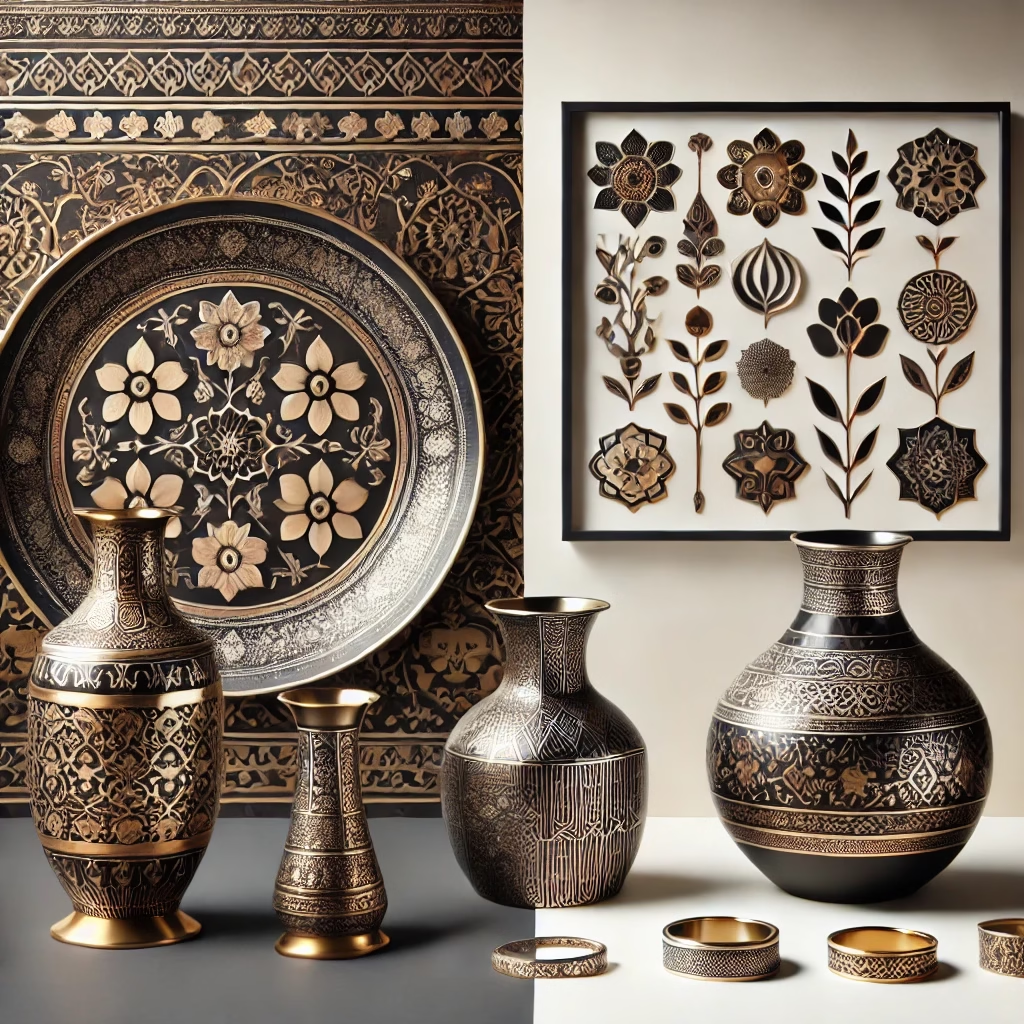
Additionally, collaborations between traditional artisans and modern designers have led to experimental designs that merge Bidriware with other materials like wood, glass, and ceramics. This fusion approach not only broadens the appeal of Bidriware but also opens new markets for artisans struggling with declining demand.
Challenges Facing Bidriware
Despite its rich heritage and exquisite craftsmanship, Bidriware faces several challenges that threaten its survival:
1. Declining Number of Artisans
The painstaking nature of Bidriware production, combined with lower financial returns, has deterred younger generations from taking up the craft. Many artisans struggle to sustain themselves, leading to a decline in the number of skilled craftsmen.
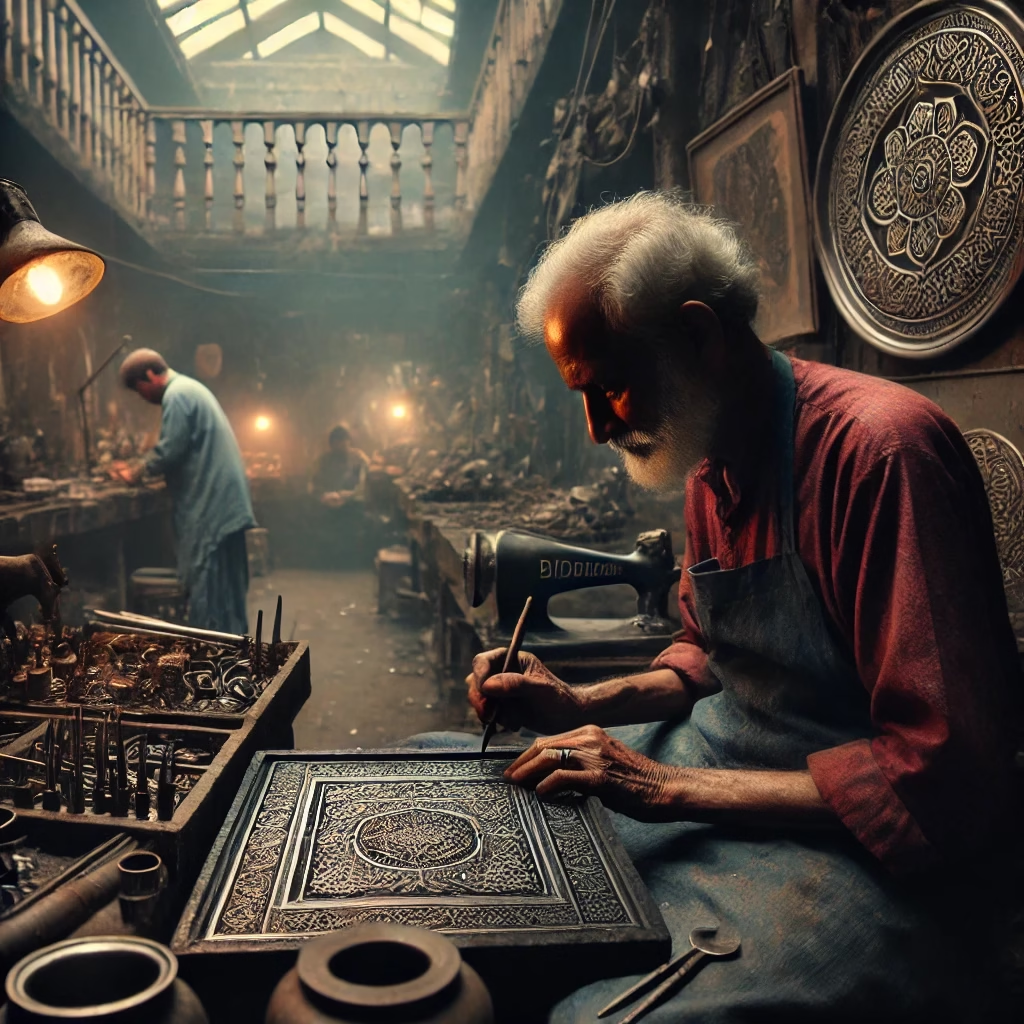
2. Competition from Mass-Produced Imitations
With the rise of machine-made replicas and cheaper alternatives, authentic handcrafted Bidriware is struggling to compete. Many markets are flooded with imitations that lack the finesse of original Bidri pieces, further reducing demand for genuine artworks.
3. Lack of Awareness and Promotion
Despite being a GI (Geographical Indication) tagged product, Bidriware does not receive the recognition it deserves. Many people, even within India, are unaware of its history and craftsmanship. A lack of proper branding and marketing has hindered its growth in the global luxury market.
4. Challenges in Procuring Traditional Materials
The special soil used for blackening Bidriware is only found in specific areas of Bidar. With increasing urbanization and changes in the environment, sourcing this essential ingredient has become challenging, affecting the quality and authenticity of the final product.
Government and Institutional Support
To preserve and promote Bidriware, several initiatives have been undertaken by the government and cultural organizations:
- Geographical Indication (GI) Tag: Bidriware was awarded the GI tag in 2006, ensuring that only artisans from Bidar can officially market their products under this name.
- Craft Clusters and Training Programs: Organizations such as the Karnataka Handicrafts Development Corporation (KHDC) and the Indian government’s handicraft boards have initiated training programs to encourage young artisans to learn and continue the craft.
- International Exhibitions and Trade Fairs: Efforts are being made to showcase Bidriware at global exhibitions, allowing international audiences to appreciate and purchase authentic pieces.
- E-commerce and Digital Platforms: Online marketplaces have provided a new avenue for artisans to sell their work directly to customers, eliminating middlemen and ensuring better profits for the craftsmen.
How You Can Support Bidriware
As lovers of art and heritage, individuals can play a significant role in preserving and promoting Bidriware. Here are a few ways you can contribute:
Buy Authentic Bidriware: Ensure you purchase from verified artisans or organizations supporting traditional craftsmanship.
Spread Awareness: Share information about Bidriware through social media, blogs, and word of mouth to help keep the art alive.
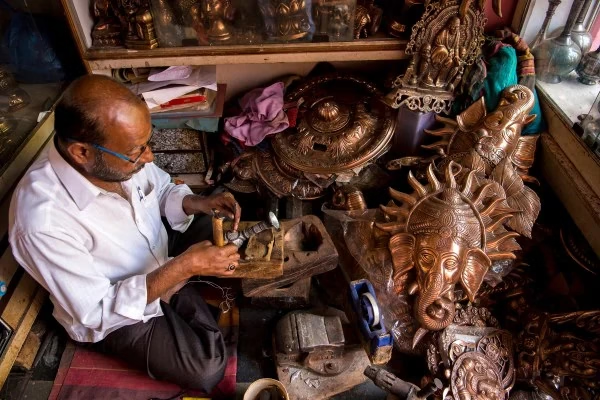
Encourage Young Artisans: Support initiatives that train and mentor young artists to continue the legacy of Bidriware.
Invest in Handcrafted Goods: Choosing handcrafted items over mass-produced products helps sustain traditional artisans and ensures the survival of the craft.
Where to Buy Authentic Bidriware?
If you’re seeking handcrafted, genuine Bidriware, it’s essential to buy from certified artisans or platforms that support traditional crafts. Purchasing from reputable sources ensures authenticity while directly benefiting the artisans who have dedicated their lives to preserving this heritage. Here are some of the best places to buy authentic Bidriware:
1. Cauvery Handicrafts Emporium
Managed by the Karnataka State Handicrafts Development Corporation, Cauvery Handicrafts Emporium offers a curated collection of authentic Bidriware. Their online store provides a range of exquisitely crafted pieces, ensuring both quality and cultural integrity.
2. GiTAGGED®
Specializing in products with Geographical Indication (GI) tags, GiTAGGED® ensures authenticity by working directly with traditional artisans. Their Bidriware collection includes jewelry, home décor, and statement pieces that highlight the craft’s exquisite beauty.
3. Tribes India
A government-backed initiative under the Ministry of Tribal Affairs, Tribes India showcases handcrafted products from artisans across the country. Their Bidriware selection features both classic and contemporary designs, promoting sustainable craftsmanship.
4. Etsy
For a diverse range of Bidriware, Etsy hosts independent artisans and sellers offering both traditional and modern interpretations of the craft. Be sure to check seller ratings and reviews to verify authenticity before purchasing.
🔗 Etsy
5. Laad Bazaar, Hyderabad
For those who love exploring local markets, Laad Bazaar near Charminar in Hyderabad is a historical marketplace known for handcrafted Bidriware. Buying directly from artisans here provides a more personal connection to the craft while ensuring authenticity.
📍 Location: Laad Bazaar, Hyderabad, Telangana
The Timeless Legacy of Bidriware
Bidriware is more than just an art form—it is a symbol of resilience, culture, and artistic mastery. Each piece tells a story, capturing centuries of tradition in its fine silver inlays and deep black metal. From the royal courts of the Bahmani Sultans to the modern homes of art lovers worldwide, Bidriware continues to shine as a timeless craft.
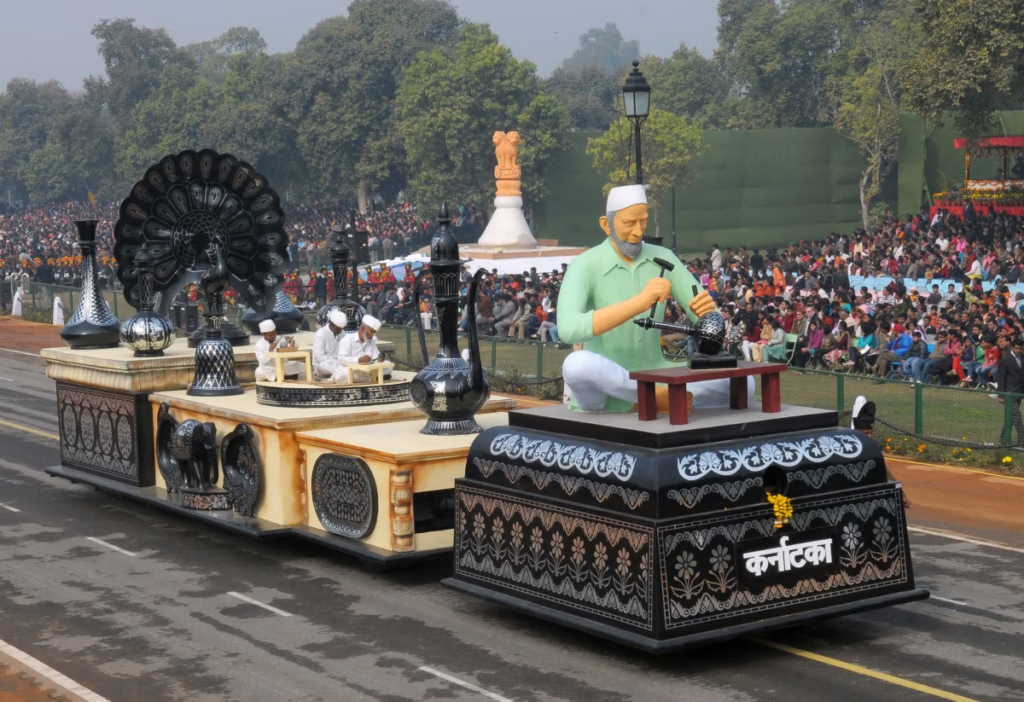
With collective efforts in preservation, awareness, and innovation, this art form can thrive for generations to come. Whether you own a piece of Bidriware or are discovering it for the first time, you are witnessing a legacy that has been lovingly crafted by the hands of history itself.
Now that you know how Bidriware is made and the challenges artisans face, consider supporting this art form by purchasing from authentic sources. Whether you prefer traditional or modern Bidriware, every piece carries a legacy worth preserving.
If you have enjoyed reading this article, dig in to learn more about India’s famous art and architecture in every corner from folkcanvas

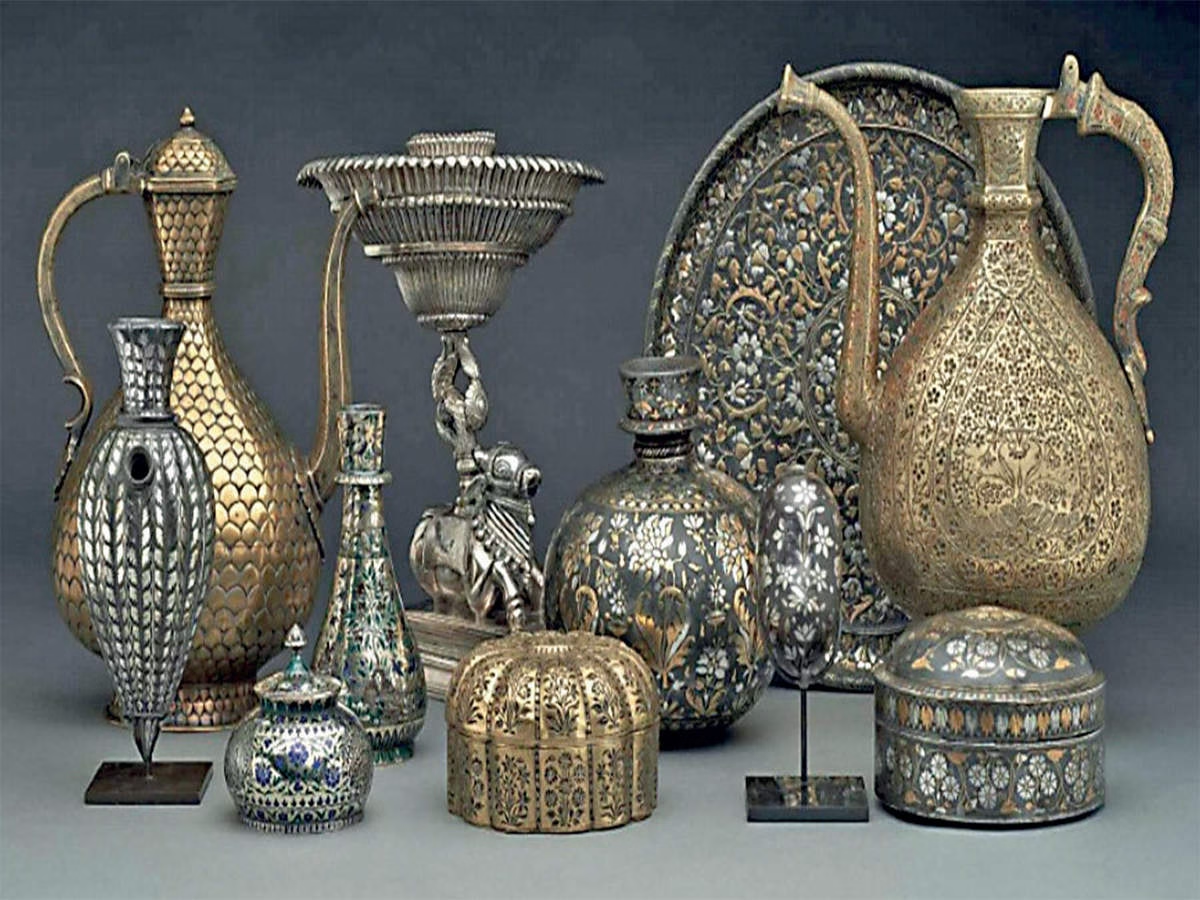

Leave a Reply